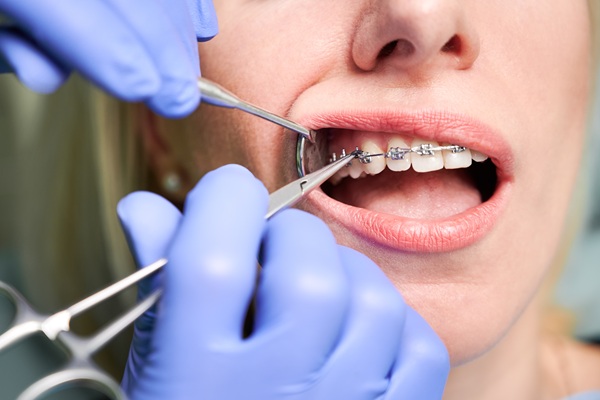Can Adults Have Orthodontic Treatments?

Roughly 80 percent of the 4.5 million people who wear braces as orthodontic treatment are children and teens. Therefore, some people think orthodontic treatments are not for adults. The fact is that grown-ups have just as many options as younger ones. If you want a beautiful smile, start by consulting with an orthodontist.
Adult orthodontic problems
When it comes to the teeth, adults experience most of the same problems as kids do. In particular, these include crooked teeth and overcrowding. In adults, crooked teeth are quite common. This occurs due to genetics, missing teeth, teeth grinding at night and various other factors.
Overcrowding is another issue. Overcrowding creates several challenges not experienced with crooked teeth. When someone has too many teeth, it can lead to an increase in cavities, tooth decay and gum disease. The problem is that flossing between the teeth becomes nearly impossible. Therefore, orthodontic treatments for this problem are different than those used to realign crooked teeth.
Overcrowding also puts people at risk of breaking a tooth. It puts a lot of strain on other teeth, as well as muscles and the jaw itself. In fact, a mouth full of teeth tightly spaced together can make chewing difficult. Fortunately, an orthodontist can review a person’s situation and make a recommendation for the right orthodontic treatment.
There are additional reasons for orthodontic treatments in adults. One is an underbite. With this, the lower portion of the jaw protrudes farther out than the upper jaw. There is also an overbite, which involves the upper jaw extending farther than the lower one. Because the teeth do not have the same level of protection, people with this condition are at a greater risk for damaging their teeth during a fall. This problem also affects chewing.
Adults also experience a crossbite. With this, the teeth of one arch fit inside the other arch while those located on the outside protrude. As imagined, this condition makes chewing extremely difficult.
Treatment options
Based on the specific problem, an orthodontist would provide the right orthodontic treatment. This might include braces, dental implants, porcelain veneers, tooth extraction and composite bonding. Regardless, adults can enjoy an improved quality of life by having their teeth fixed.
Treatment phases
For patients advised to wear braces, they go through two phases as part of the orthodontic treatment process. The first phase, known as the “active phase,” is when the orthodontist performs the work. The second phase, or “retention phase,” is when the braces come off and the patient begins to wear a retainer to prevent the newly positioned teeth from shifting.
No matter which orthodontic treatment a person receives, the orthodontist stays in touch to ensure that everything goes according to plan. By selecting the right dentist, seldom do issues arise.
Seek treatment today
Instead of living with an orthodontic problem, do something good for yourself by scheduling an appointment with an orthodontist today. With the procedure done, you can smile big. Whether you had straight teeth at one time that shifted or have started to have a new problem, there are procedures to help. A beautiful smile will give you a more youthful appearance.
Request an appointment here: http://www.smilesbyshell.com or call Dr. Gregory K Shell at (828) 386-9811 for an appointment in our Granite Falls office.
Check out what others are saying about our services on Yelp: Read our Yelp reviews.
Recent Posts
Metal braces are a type of orthodontic appliance used to straighten teeth and improve the alignment of the bite. Traditionally, braces have been made from stainless steel or nickel-titanium alloy. The latter one has become popular in recent years due to its biocompatibility and ease of placement. In this article, we will discuss some advantages…
Straightening teeth is a life-changing decision for many, and a braces specialist can help find the fastest path to a beautiful, healthy smile. These dental specialists can help you explore various treatment options and tailor the approach to your or your child’s needs and goals. Understanding how a braces specialist approaches orthodontic treatment can make…
An orthodontist has various treatments to help patients achieve a straighter smile. While it is possible to get orthodontic treatment from other dental providers or even online, choosing a specialist like an orthodontist to guide your treatment can be the safest, quickest, and most comfortable route. Understanding why orthodontist-led treatments are the preferred choice for…
Corrective braces are ideal for achieving an attractive smile as they can create a symmetric and even smile. This can also provide oral health benefits and reduce the risk of concerns like cavities. In this review, we discuss the basics of corrective braces to help you decide if they may be right for you.Here is…


